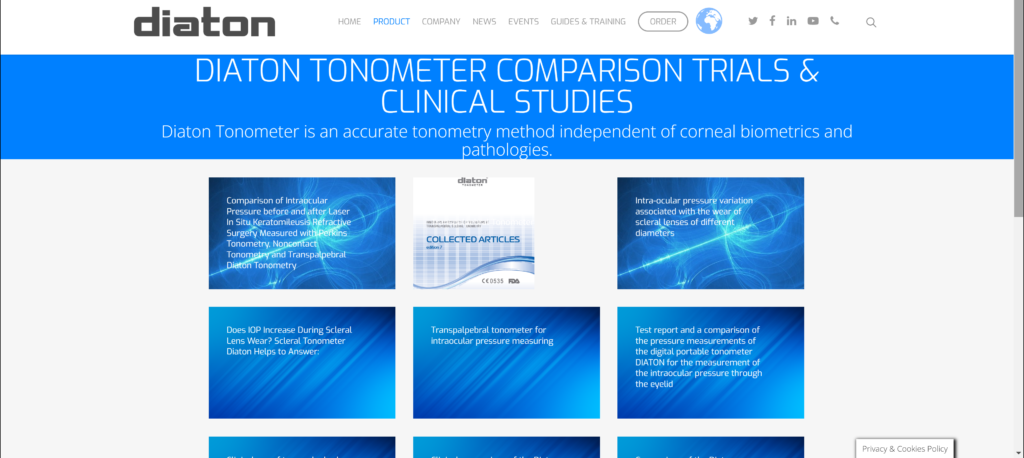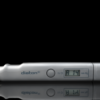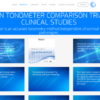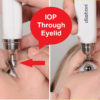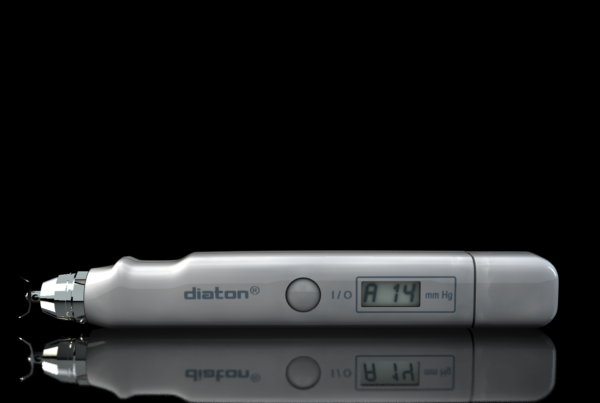Innovative Technology in IOP Measurement: Diaton Tonometer
Introduction
The transpalpebral Diaton tonometer introduces a novel approach to intraocular pressure (IOP) measurement, diverging from traditional corneal methods to offer a non-invasive, patient-friendly alternative. This paper reviews the clinical applications, advantages, and comparative efficacy of the Diaton tonometer, referencing key studies to underline its significance in modern ophthalmic practice.
Methodology
The Diaton tonometer measures IOP through the eyelid, avoiding direct corneal contact. This technique not only mitigates the risk of corneal abrasion and infection but also eliminates the need for topical anesthesia, thereby enhancing patient comfort and safety
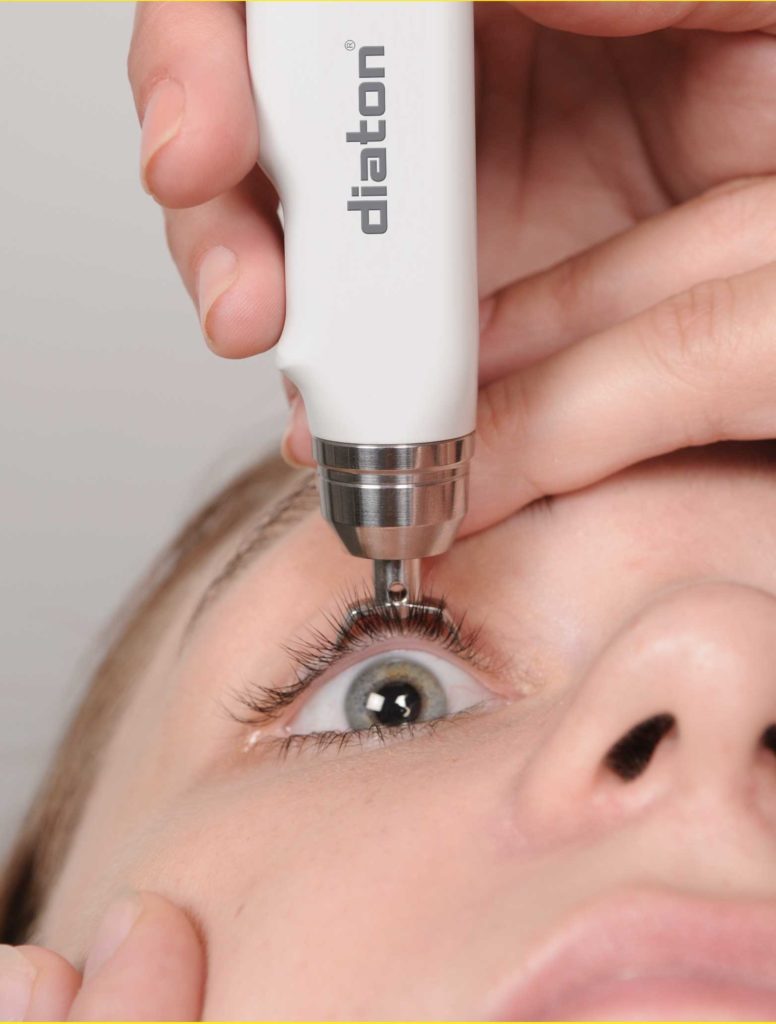
Clinical Applications and Advantages
Studies have demonstrated the broad clinical utility of the Diaton tonometer across ophthalmology, general medicine, optometry, and neurology. Its ability to accurately measure IOP regardless of corneal thickness, presence of viral infections, corneal surgeries, or contact lens use positions it as a versatile diagnostic tool
.
The transpalpebral approach has been particularly advantageous in settings where traditional corneal tonometry is contraindicated or challenging, such as in pediatric populations, patients with corneal pathologies, or those who have undergone corneal surgeries
.
Comparative Efficacy
Clinical comparisons with gold-standard devices like the Goldmann applanation tonometer have validated the Diaton’s accuracy and reliability. For instance, studies have indicated a high degree of correlation between Diaton and Goldmann readings, emphasizing the former’s efficacy in various patient demographics and clinical scenarios . Furthermore, the Diaton tonometer’s performance remains consistent post-refractive surgery, providing reliable IOP measurements unaffected by changes in corneal thickness or biomechanics .
Safety and Patient Experience
The non-invasive nature of the Diaton tonometer significantly enhances patient experience by eliminating the discomfort and anxiety associated with corneal contact. Additionally, the avoidance of anesthesia and the reduced risk of cross-contamination contribute to its safety profile, making it a preferable option for both patients and clinicians .
Future Perspectives
The integration of the Diaton tonometer into clinical practice is poised to transform IOP measurement by providing a safer, more comfortable, and equally accurate alternative to traditional methods. Ongoing research and broader clinical adoption will likely further elucidate its potential, expanding its applications in eye care and related fields .
Conclusion
The transpalpebral Diaton tonometer represents a significant advancement in ophthalmic diagnostics, offering a non-invasive, accurate, and patient-friendly method for measuring intraocular pressure. Clinical studies affirm its efficacy and reliability, underscoring its value in enhancing patient care and expanding diagnostic capabilities across medical disciplines.

